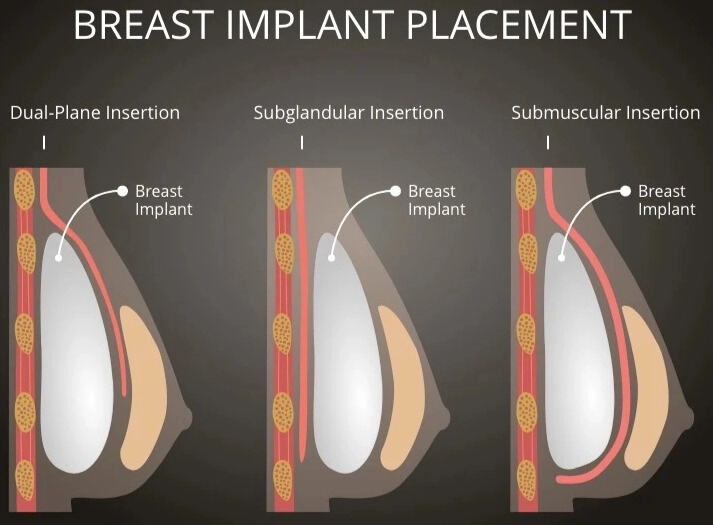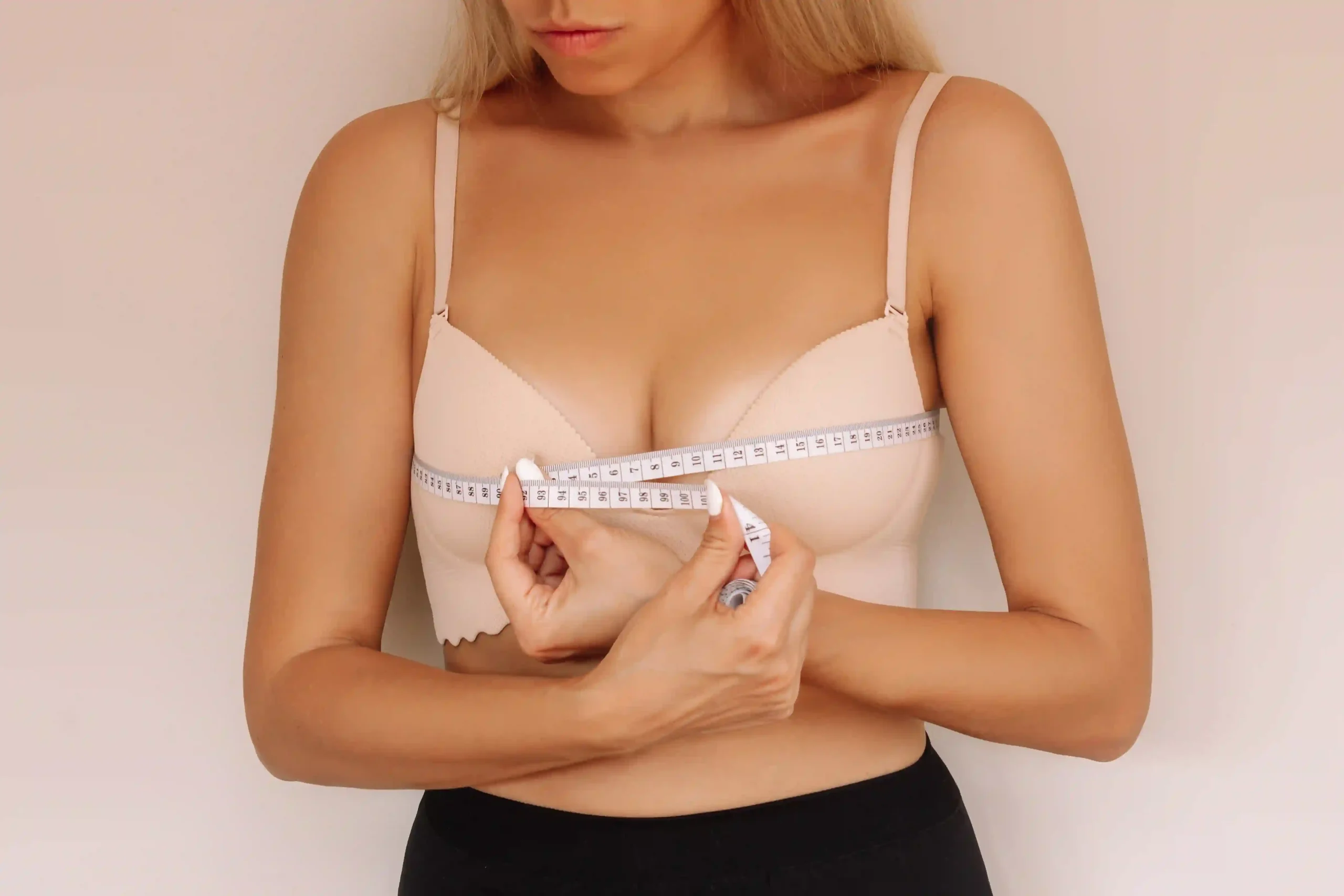Every woman’s body is unique, and it’s completely normal to seek ways to feel more confident in your own skin. Whether it’s juggling young kids, seeing your body change after pregnancy, or just noticing that time and gravity have had their way, many women between 25–45 start considering breast surgery. You might be dreaming of fuller, firmer breasts or simply curious about how different procedures could help. In the US and UK alike, it’s all about understanding your options – and feeling empowered to make the right choice for you.
Both breast enlargement (also called breast augmentation or informally a “boob job”) and mastopexy (known as a breast lift or uplift) are popular cosmetic surgeries. They serve different goals: one adds volume, the other reshapes and raises. We’ll break down what each procedure involves, the benefits and recovery, and help you weigh your options. Think of this as your friendly guide to making an informed decision.

What Is Breast Enlargement (Augmentation)?
Breast enlargement (augmentation mammoplasty) is a surgery to increase breast size and improve shape. In everyday terms, many people call it a “boob job.” During an augmentation, a board-certified plastic surgeon (US) or consultant cosmetic surgeon (UK) places implants (or sometimes transfers fat) to give fuller breasts. Women choose this for all sorts of reasons: maybe you feel your breasts are naturally too small, or you’ve lost volume after pregnancy or weight loss, or your breasts are uneven. In fact, UK sources note that people often want augmentation to “improve how they feel about themselves” if their “body has changed significantly after pregnancy, weight loss or other life events”.
Benefits: Breast enlargement can dramatically enhance your silhouette. It can increase the fullness and projection of your breasts, creating a balanced, proportionate look. Many women report that fuller breasts help improve their body confidence and self-image. Augmentation is also a medical option for reconstruction (for example after mastectomy) or correcting asymmetry, though here we focus on cosmetic cases. The result can be very natural – especially with modern silicone implants whose gel mimics real breast tissue.
Types of Implants: There are two main implant types: saline and silicone. Saline implants have a silicone shell filled with sterile saltwater after insertion. If a saline implant ruptures, the body safely absorbs the saltwater; you’ll likely notice the change quickly since the breast deflates. Silicone implants are pre-filled with a cohesive gel that feels very natural. According to UK health sources, silicone is “less likely to wrinkle” and generally “feels more natural” than saline. Saline implants require smaller incisions (since they’re filled after placement), but some women prefer silicone for its look and feel. Your surgeon will help you choose based on your goals and body shape.
Procedure & Downtime: Augmentation is done under general anesthesia and usually as a day-case in many clinics. It often involves an incision either under the breast, around the nipple, or in the armpit. Recovery is relatively quick. In most cases you’ll be up and about the next day (though you’ll need a ride home after surgery). Many patients return to light activities after just a few days. On average, full recovery takes about 4–6 weeks. You’ll have some soreness, swelling, and bruising at first, and likely need to wear a supportive bra constantly for the first few weeks. Heavy lifting and vigorous exercise should be avoided for about a month. By 4–6 weeks most patients feel back to normal, with breasts settling into a natural position.
Results: The great news is that, with careful planning, augmentation can look very natural. Surgeons pick implant size and shape to match your body proportions and goals. You’ll end up with fuller, perkier breasts – but they still feel like your own because of the soft silicone gel. Remember that implants do require long-term care: you may need MRIs or check-ups years down the line to ensure everything’s okay. But modern implants are safe and built to last; many women enjoy their results for a decade or more before any concern arises.

What Is Mastopexy (Breast Lift)?
A mastopexy, often called a breast lift or breast uplift, reshapes and raises sagging breasts without necessarily changing their size. Think of it as an upgrade that restores youthfulness and perkiness. Over time (especially after pregnancy, breastfeeding, weight changes, or aging), it’s common for breasts to lose firmness and start to droop. A breast lift surgery simply lifts what you already have: removing excess skin, tightening surrounding tissue, and repositioning the nipple higher on the breast. Importantly, a mastopexy does not add volume – it just turns droopy breasts into perky ones.
Who Is It For: Mastopexy is ideal if your breasts have plenty of volume but are saggy or stretched. UK medical advice notes that after pregnancy and breastfeeding (which can stretch breasts), or significant weight loss, many women find their breasts need a lift back to a higher position. Also, it’s common to get a lift when families are complete – since pregnancy can stretch the results, surgeons usually recommend waiting until after you’re done having children and have finished breastfeeding (usually 6–12 months after weaning). If you already feel flat or droopy (and especially if your nipples point downward), a mastopexy can be transformative, boosting confidence and making clothes and bras fit better.
Techniques: There are several ways to lift breasts, chosen based on how much lift you need. The most common pattern involves an incision around the areola and another vertically down from the areola to the crease under the breast (a so-called “lollipop” lift). For more extensive sagging, an additional cut along the breast crease can be added to make an “anchor” or inverted-T shape. Other less-common methods include a small crescent-shaped lift above the areola (for minimal sagging) or a “donut” peri-areolar lift (cut only around the nipple). All of these follow the same principle: remove extra skin, reshape the breast into a firmer cone, and lift the nipple to a higher position.
Recovery: Breast lift recovery is similar to augmentation in overall timeline, but your experience might feel a bit different. Right after surgery, you’ll be bandaged up and will need to sleep on your back. Most people are up and moving around within a day. By about 2 weeks, you can usually do light activities (though you’ll still need to wear a supportive bra with no underwire and avoid any heavy lifting). It’s normal to take at least two weeks off work after a lift. Intimate activities should be paused for about 2 weeks. You’ll likely still have soreness and swelling for a few weeks. By around 6 weeks, most women are back to normal exercise and feel mostly recovered. Final results continue improving over several months as swelling subsides.
Results: After a mastopexy, your breasts will sit higher on the chest with a perkier shape. Initially they may look and feel tight – but give it time! Swelling settles and tissues soften over a few months. Scars from a lift are permanent but fade significantly; BAAPS (UK surgeons’ association) notes scars usually change from red/purple to pale over 12–18 months. Many women say their new shape is a huge confidence booster. One thing to keep in mind: a lift won’t add cup size – in fact, your bra size often stays the same (or can even feel smaller if any tissue is removed). But by raising the breasts, a lift often makes you look perkier even without implants. Also, because the nipples are moved, breast lift surgery can affect breastfeeding potential, so discuss future family plans with your surgeon.
Key Differences: Augmentation vs. Lift
Now that we’ve covered each procedure, let’s break down the main differences side-by-side:
Goal: Augmentation adds volume; lift repositions and tightens. If you want more fullness or proportion, implants do that. If you’re happy with size but not the position, a lift is for you.
Technique: Augmentation places implants (saline or silicone) under the breast tissue or muscle. Mastopexy cuts away excess skin and lifts the nipple up.
Scars: Augmentation scars are usually small (inframammary crease or around the areola). Mastopexy scars are bigger (lollipop or anchor shape) because more skin is removed.
Recovery: Both surgeries are “major,” but recovery timelines are comparable. Augmentation patients often resume light activity in a few days and normal life by 4–6 weeks. Mastopexy patients typically need about two weeks off work and full recovery by 6–8 weeks. Pain and swelling are similar, but remember: lift scars need extra care (bras, ointments) as they heal.
Aftereffects: Augmented breasts stay plump immediately; a lift’s result can soften over months. However, augmentation alone does not fix sagging. As the American Society of Plastic Surgeons notes, a breast augmentation “does not correct severely drooping breasts” – you might need a lift too if sagging is an issue. Conversely, a lift won’t make your breasts bigger in volume.
Combining Procedures: Sometimes the best answer is both. Many surgeons perform an augmentation and lift together (or in stages) to get the ideal shape and size. For example, if you have sagging breasts that are also small, you might choose implants for volume and a lift for position. Your surgeon will help craft the right plan for your body.
Ultimately, the choice depends on your goals. Think of it this way: Do you want more size or more lift? Or both? Comparing your desired outcome to what each surgery offers is the key.
Common Concerns and FAQs
Making any decision about surgery comes with questions. Here are some FAQs and honest answers to ease your mind:
Will it look natural? With skillful surgeons and the right implant size, breast enlargement can look natural for your body. Surgeons focus on body proportions to avoid “overdone” looks. For a lift, natural means breasts still feel like yours – they’re just perkier. They won’t look like cartoon boobs; rather they regain a youthful contour.
How long will the results last? Implants are durable but not lifetime devices. Many women keep theirs over 10–15 years; occasionally an implant might need replacing. A lift’s result isn’t permanent either. Gravity and aging continue to act, so breasts may droop a bit again over time. Maintaining a stable weight and healthy lifestyle can help preserve your new shape. Think of these procedures as getting the shape you want now – future changes are normal, and touch-up surgery is always an option.
What about scars and pain? Both surgeries involve scars. Augmentation scars are usually minimal. Lift scars are more noticeable at first, but they fade dramatically (often from bright pink to pale) over the first year. Pain is manageable: you’ll be sore for a few days, and most discomfort can be controlled with standard pain meds. Surgeons give detailed aftercare instructions (and expect bruising/swelling in the first weeks).
Can I breastfeed afterward? Many women successfully breastfeed after implants or a lift, but there are factors. Augmentation through inframammary (under-breast) incisions usually doesn’t affect breastfeeding. Lifts involve moving nipples, which can disturb milk ducts.
Is it safe and what are the risks? Both procedures are common and generally safe in expert hands. US and UK surgeons have strict training. Implants are FDA-approved (US) and MHRA-approved (UK). Risks include infection, bleeding, or changes in sensation, but serious complications are rare. The UK’s NHS notes that “capsular contracture” (scar tissue around implants) is one concern, but modern implants and techniques have made problems less frequent. Make sure your surgeon is board-certified (or on the GMC specialist register in the UK) and experienced specifically with breast work. Follow-up visits are crucial to catch any issues early.
Which surgery is “better”? There is no one-size-fits-all answer! One isn’t universally better than the other – it’s all about your goals. If you want size, choose augmentation. If you want shape, choose lift. Consult with a qualified surgeon who understands your vision. They’ll assess your anatomy, skin quality, and lifestyle to recommend what can safely achieve your look. In some cases, insurance or finance might play a role (for example, implants can be more expensive long-term than a lift alone), so consider the practical aspects too.

Choosing the Right Option for You
Deciding between breast enlargement and a lift (or choosing to do both) is deeply personal. Here are some steps to guide your choice:
- Reflect on Your Goals. Are you dreaming of more volume and cleavage, or do you miss your breasts looking perky? Try on breast prostheses or use padded bras to visualize. Consider how you feel in different tops and swimsuits.
- Consider Your Body. Discuss your anatomy with a specialist. If your breasts have enough volume but droop, a lift might suffice. If they’re small and droopy, you might need implants plus a lift. Also, think about scarring – some people prefer less scarring (so might choose an implant alone).
- Factor in Lifestyle. Recovery for either takes several weeks off. Do you have help at home? A desk job (easier downtime) or manual job? Surgeons typically advise about 1–2 weeks off work, light exercise for a month, and full exercise after 6 weeks. Plan accordingly for either choice.
- Consult Thoroughly. Meet with a board-certified (US) or GMC-certified (UK) plastic surgeon to hear their recommendation. Show them photos of results you love. Ask questions: about risks, how many procedures they perform annually, and see before/after photos of their patients. UK advice emphasizes finding a surgeon on the specialist register (plastics) and asking about credentials. In the US, check ASPS certification and patient reviews.
- Think Long-Term. If you’re planning more kids, you might delay. If budget is a concern, know that in the US and UK private costs are significant. (Some women choose accredited overseas clinics for cost savings – for example, Vitapera in Turkey offers world-class care with up to ~65% cost savings on breast enlargement. We’ll talk more about that next.)
- Listen to Yourself. Empower yourself with information, but trust your own instincts too. It’s your body and your confidence at stake. Imagine how each option would make you feel year from now, and choose the path that aligns best with your sense of self.

Confidence and Body Positivity with Vitapera
At the end of the day, the best choice is the one that makes you feel great. Breast enlargement and breast lift are both powerful tools to boost self-confidence. You deserve to look in the mirror and feel happy with your body. Whether you choose implants, a lift, or a combination, these procedures can help you celebrate your beauty on your terms.
It’s wonderful to seek change, but remember: surgery is about enhancing your self-esteem, not chasing someone else’s ideal. Embrace each step of the journey – from research to recovery – as a statement of self-care. Modern surgeons in the US, UK, and abroad (like those at Vitapera) focus on natural, individualized results. With the right approach, your outcome will be uniquely yours.
Ready to explore breast enlargement options? Vitapera’s team of consultant plastic surgeons offers expert breast augmentation in a world-class facility, with personalized care from day one. Visit Vitapera’s website to learn more about breast augmentation, request a free quote, or schedule a consultation. Your curves await – and Vitapera is here to help you find them.










